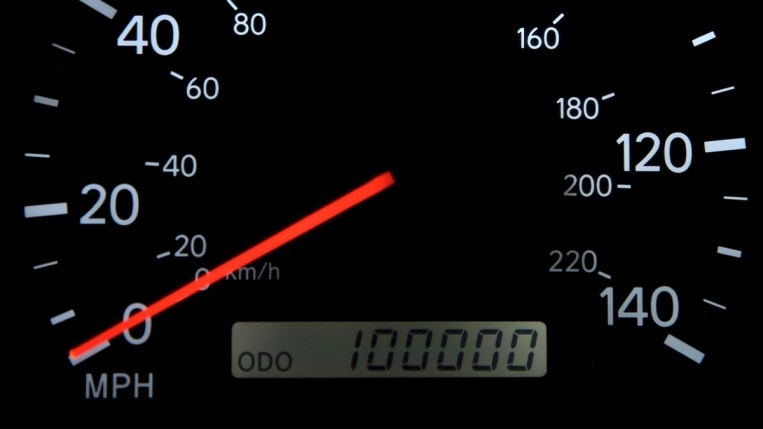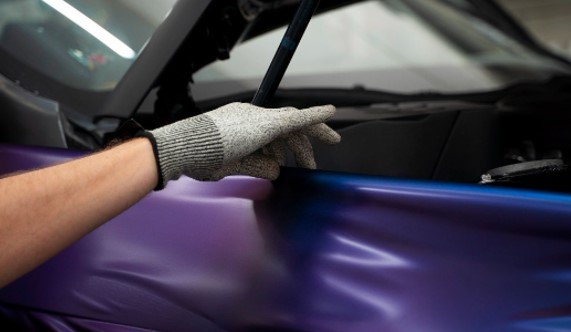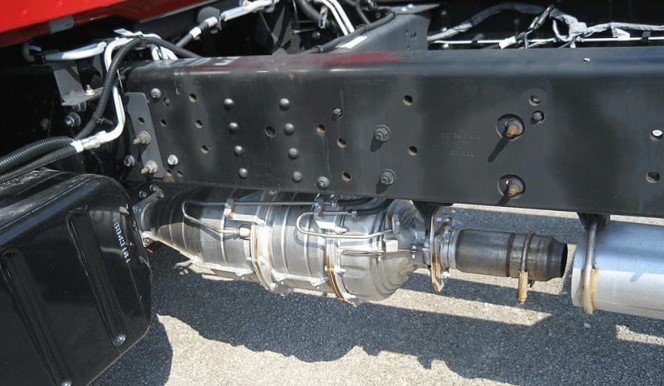Tips to Extend the Life of Your Car to 100K Miles and Beyond

Whether you bought your car new or used, it was probably a big investment. While some people opt to trade in their car every few years or jump from lease to lease, other drivers prefer to drive their vehicle well past 100,000 miles. This goal is easy to achieve with proper care and maintenance.
Here are some tips to extend the life of your car to 100K miles and beyond.
Maintenance Tips
The best thing you can do to ensure your vehicle’s long life is to follow the manufacturer’s recommended maintenance schedule. Some breakdowns are unavoidable, but you can help avoid unexpected car repairs by keeping up with routine maintenance.
- Find a reputable auto shop with certified mechanics or go directly to the dealer for maintenance and repairs.
- Address safety recalls as soon as possible.
- Check your tires often for proper inflation and abnormal wear.
- Check and adjust your car’s alignment so your tires wear evenly.
- Replace tires when the tread wears down to 2/32 of an inch.
- Swap tires for the season to ensure proper handling for the weather and safety on the road.
- Check and tighten all lug nuts and connection points on your wheels.
- Get your A/C checked ahead of summer since your cooling system works harder during hot weather.
- Pay attention to strange noises or new vibrations.
- Immediately heed any warning lights on the dashboard.
- Inspect and clean your car’s battery terminals to prevent corrosion.
- Make sure the battery terminal connection points are secure.
- Replace the air filter according to the manufacturer’s timeline to maintain optimal engine performance.
- Clean the fuel injectors to help maintain your fuel efficiency levels.
- Replace the windshield wiper blades every six to 12 months.
- Lubricate door hinges, locks, and handles to prevent rust and corrosion from harsh cold and road salt.
- Tighten loose or damaged belts and hoses to prevent engine damage.
- Inspect and replace your spark plugs as needed.
- Replace the brake pads every 25,000 to 50,000 miles.
Oil & Fluids
A car engine requires various fluids to keep it running safely and smoothly. Check fluid levels regularly and add, change, or flush fluids when necessary to keep parts operating as they should.
- Use the appropriate high-quality oil for your engine.
- Stick to the recommended oil change intervals as outlined by the manufacturer.
- Use fuel with the recommended octane rating for your vehicle.
- Flush and replace coolant to prevent overheating and engine damage.
- Check the power steering fluid often for smooth steering.
- Top off your windshield washer fluid regularly.
- Maintain the recommended level of brake fluid for safe braking.
- Check and flush your transmission fluid as needed.
- On manual transmissions, check and replace the clutch fluid as needed.
Driving Tips
It might seem obvious that avoiding accidents plays a part in keeping your car running for more than 100,000 miles. Still, being a careful driver means more than not crashing into things. Operate your vehicle within its limits and drive it with care to keep it on the road for a long time.
- Accelerate and brake steadily.
- Avoid high-speed driving.
- Drive your car regularly and don’t let the engine idle for extended periods.
- Don’t overload your car with too much weight or heavy loads to preserve your suspension system.
- Don’t tow or haul loads beyond your vehicle’s recommended capacity.
- Avoid driving on rough roads to prevent damage to your car’s undercarriage and exhaust system.
- For manual transmissions, don’t rest your hand on the gear shift lever while driving to prevent excess wear and tear on the transmission.
- Keep your foot off the clutch pedal while driving to preserve the clutch plate.
- Use the parking brake on steep hills.
- Close your car doors, trunk, and hood firmly but don’t slam them.
- Come to a complete stop before shifting from drive to reverse and vice versa.
- In times of extreme cold, let your engine warm up before you start driving.
- Store your car in a garage or covered area when it’s not in use to protect it from the elements.
Cleaning Tips
Keeping your car clean will make you feel better about your ride. Beyond the appearance, regular cleaning using the right products and equipment protects the exterior and helps retain vehicle value for the long term.
- Wash your car regularly with a mild car detergent and a soft sponge or microfiber cloth.
- Don’t use abrasive materials or household cleaners on the exterior or interior surfaces.
- Dry your car thoroughly after each wash to prevent water spots and streaks.
- Apply wax or sealant to protect the paint from UV rays and oxidation.
- Clean the windows, mirrors, and headlights regularly for clear visibility and safe driving.
- Spray the undercarriage to remove salt buildup to prevent rust and corrosion in regions where that can be an issue.
- Clean the wheels and tires regularly and apply a tire shine product to help prevent fading and cracking.
- Vacuum the interior to keep the upholstery clean.
- Wipe down the interior surfaces often.
- Wipe down leather or vinyl seats with a cleaner designed to keep the material soft and protected.
- Don’t smoke in your car to prevent deep-set odors.
Electric Car Tips
- Keep your electric vehicle battery charged within the recommended range of 20{12dec99aef6f119e349308ab81c83b123ba77cd3d9c980ff09eaac1f958a2724} to 80{12dec99aef6f119e349308ab81c83b123ba77cd3d9c980ff09eaac1f958a2724}.
- Avoid frequent DC fast charging sessions to help preserve battery health.
- Never use a household extension cord when charging at home.
- Try to drive less often in times of high heat or extreme cold.
- Pre-condition the battery and cabin during the winter months.
- Utilize the EV’s thermal management system to help regulate the battery temperature while driving.
- Keep the electric car’s software updated for the latest bug fixes, performance improvements, and safety features.
- Take advantage of your EV’s regenerative braking system to extend the lifespan of brake pads and put energy back into the battery simultaneously.
100K-Mile Service
When the odometer reaches 100,000 miles, congratulate yourself. This is a significant milestone for any vehicle. Head to the dealership or a certified mechanic for a 100K-mile service to keep it running smoothly.
- Replace worn-out parts: This can help maintain and even boost performance, fuel efficiency, and reliability. New spark plugs, belts, hoses, and filters can make a big difference in how your car handles and drives past 100K miles.
- Service the transmission: Have the transmission fluid flushed, the filter replaced, and the system inspected.
- Service the cooling system: Flush the coolant, inspect the hoses, and check the radiator for damage.
- Proactive repairs: For cars driven beyond 100K miles, there are often “known issues” that can be addressed ahead of time. Have your mechanic advise and recommend the best course of action.
Read Related Articles:
FAQ
Should I change my transmission fluid after 100K miles?
Keep up with the recommended transmission fluid schedule outlined by your car’s manufacturer. Once you hit 100K miles, head to the dealer or certified mechanic for a full-service tune up. This service may include flushing and replacing the transmission fluid.
Do electric cars need maintenance?
Yes, just like gas-powered vehicles, electric cars still require regular maintenance and service to keep them running at their best. However, EV maintenance costs are generally lower since they have fewer moving components.
How long do car tires last?
The lifespan of your tires will vary depending on your driving style, environmental influences, and the style of tires you choose. On average, you should expect to replace your tires every 40,000 to 70,000 miles.





